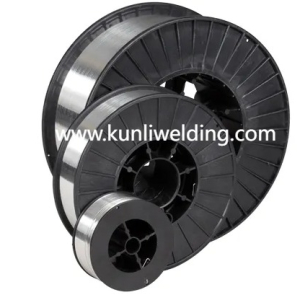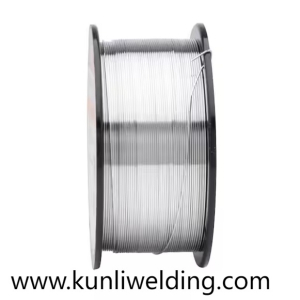Innovations in joining techniques and consumable handling are changing how yards and fabrication shops think about supply chains, and Aluminum Mig Wire Manufacturers now play a central role in delivering wires that feed predictably, weld cleanly and suit automated processes. As energy transitions and large scale infrastructure projects push demand for lighter assemblies and precise welds, these suppliers are introducing changes that matter on the shop floor.
One visible trend is tighter control of alloy chemistry at the source. When a manufacturer standardizes feedstock and tightens incoming checks, the resulting wire shows more uniform melt behavior and a steadier arc. That matters when a design requires consistent mechanical performance across many seams and when teams want to reproduce a good result across shifts without long qualification loops. Fabricators gain confidence when the incoming reel behaves the way a test weld showed it would.
Feedability has been a stubborn shop floor issue, and new spool and winding innovations aim to reduce it. Even winding patterns and controlled flange tension minimize bird nesting and feed surges that stop lines. Producers pair those mechanical improvements with clear packaging that shields the wire from moisture and handling damage during transport. For production managers that balance manual and robotic stations, smoother feed paths translate directly into fewer stoppages and less unplanned scrap.
Packaging and traceability are also getting attention. Sealed inner bags, labeled lot numbers and retained sample lengths help welding teams and quality inspectors isolate any anomaly quickly. When a problematic seam appears, having clear batch information reduces the time spent guessing and speeds corrective steps. Suppliers who offer clear handling notes and traceable lots make it simpler for buyers to accept reels into production with well defined checks on arrival.
Another innovation concerns supplier support for automation. Robotic cells and integrated feeders need predictable spool geometry and vendor notes about recommended drive roll profiles and liner dimensions. Some suppliers now provide compatibility charts and sample reels expressly intended for automated validation. That small coordination saves integrators time and prevents late stage changes that ripple through a program schedule.
Surface finish and cleanliness measures have progressed too. Improved cleaning steps before drawing and controlled anneal processes reduce surface films that can cause porosity or unstable transfer during welding. In sectors where visual finish or coating adhesion matters, wire that arrives with a consistent surface condition eases the post weld process and reduces dressing and masking work.
Sustainability and packaging circularity are entering procurement conversations. Manufacturers are testing recyclable reel materials and more compact pack sizes that still protect the wire. When procurement balances handling convenience with environmental aims, suppliers that align packaging choices to those priorities help reduce waste and handling burdens across the supply chain.
Field service and repair kits have become more practical. Suppliers now offer smaller sealed reels and clear repair parameter notes so mobile technicians can restore parts in constrained conditions without repeated trips to central stores. For operators of distributed assets that cannot afford long downtime, these options reduce logistical friction and speed return to service.
Quality control workflows also benefit from digital tools. Enhanced lot records, digital certificates and accessible handling guides let buyers verify a reel against documented production checks before it hits the line. That transparency helps build trust between buyer and supplier and reduces the rounds of parameter hunting that can delay production ramps.
How should shops adapt to these innovations? Start by demanding sealed sample reels for trials, and test in your actual feeders and joint geometries. Request supplier notes about recommended drive rolls liner sizes and handling steps. Keep a short log of workable parameters and of any feed path quirks so that when a new lot arrives your team can compare real world behavior to the supplier guidance. That pragmatic approach turns supplier innovations into reliable shop practice.
As fabrication markets evolve under pressures from electrification and renewable infrastructure, the links between materials, handling and automation grow stronger. When Aluminum Mig Wire Manufacturers pair improved alloy control spool technology packaging and practical technical support, fabricators reduce qualification time and keep lines moving. For product options and lineup details related to marine grade and structural welding wires consult the ER5183 product listing at https://www.kunliwelding.com/product/aluminum-welding-wire/er5183-aluminum-welding-wire.html .




